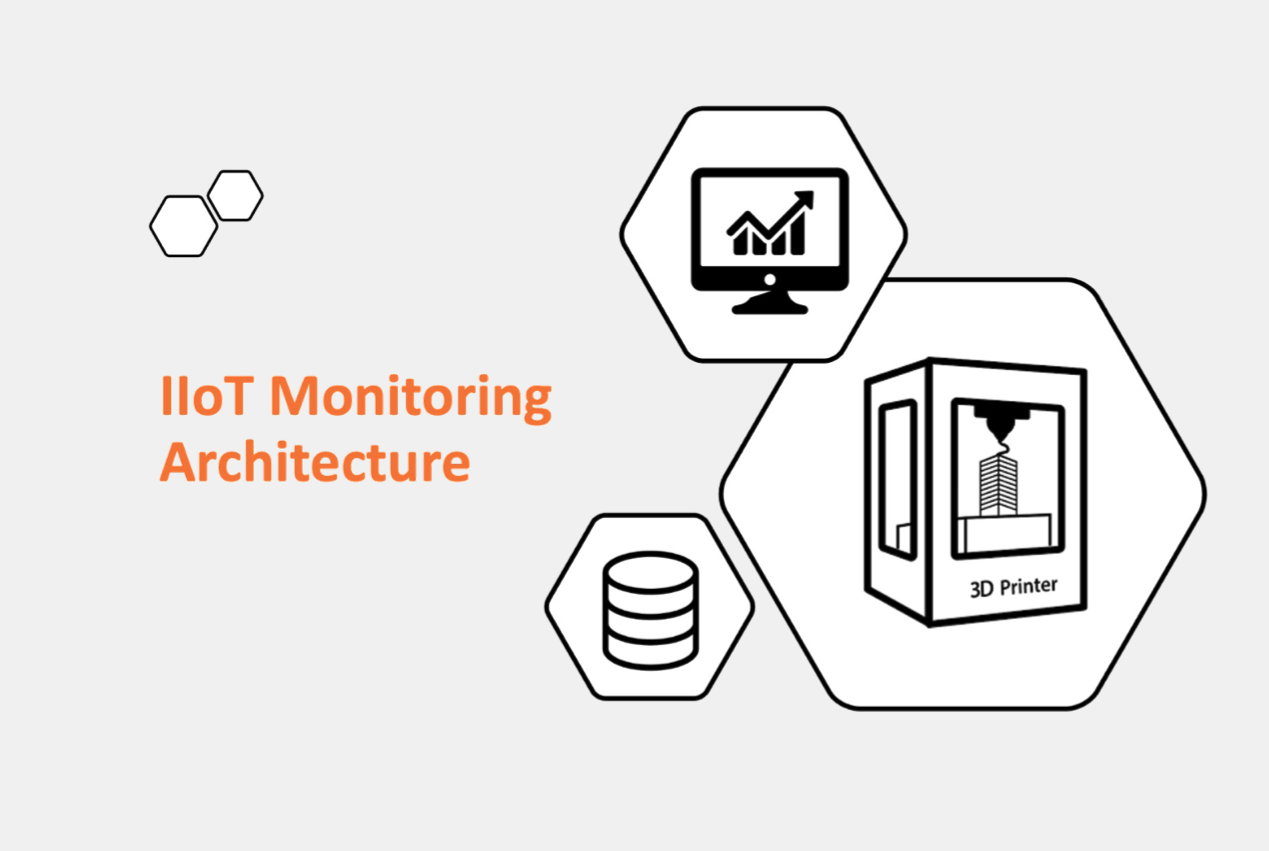
IIoT Monitoring Architecture
IIoT monitoring architecture for machine data visualisation

Project description
The project was developed in collaboration with voxelJet. The company specialises in the production of 3D printers for industrial 3D printing and also offers 3D printing as a service.
Link to the IIoT Monitoring Architecture showcase.
Problem:
In an industrial environment, the smooth operation of production machines is essential for business success. The use of real-time analytics and monitoring is advantageous for monitoring the current status and recognising errors at an early stage.
3D printers have a large number of sensors that collect large amounts of data in the form of metrics during a printing process. Some of these are generated every millisecond. The current solution does not meet the requirements of the current volume and complexity of data. In practice, the full added value of the data is often not yet known, which is why new architecture requirements arise over time. As a result, the modularity and expandability of the target architecture is particularly important.
In order to overcome these challenges, a complete reference architecture is being developed as part of the project. This covers the entire use case from the creation of the data to storage, filtering and visualisation.
Solution approach:
Based on open source software, a new architecture was developed that focusses on the following key points:
Hardware: The available infrastructure consists of 4th generation Raspberry Pis. The solution is correspondingly resource-optimised and can be operated on different processor architectures.
Scalability: The applications are operated in containers in a Kubernetes cluster. This means that the architecture is freely scalable and can be operated and ported both on-premise and in the cloud.
Modularity: The modular structure of the architecture allows individual components to be replaced as required. For example, cloud services can also be used instead of the database and visualisation solution. This structure also enables future application areas to be added as required without rendering the already implemented architecture obsolete.
Usecase-optimised technologies: Each technology used provides clearly defined added value for the problem. Customising the scope of functions is therefore not required.
- NodeRed: Edge component for merging different machine standards and transforming the data
- Mosquitto: MQTT broker for providing data to any number of consumers in the IT environment
- influxDB: Timeseries database with extensive feature set for analysing machine data
- Grafana: Interactive and freely configurable visualisation tool
Supervisor:
- Prof. Dr.-Ing. Alexandra Teynor
- Raphael Mayr
Cooperation Partner:
- voxelJet
Students:
- Simon Hausenblas
- Julian Scheben
- Lukas Hintermeier
- Julian Schmidt
